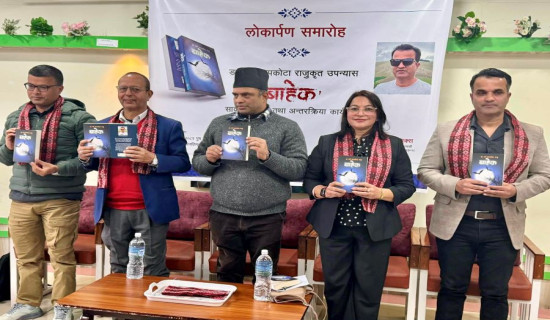- Saturday, 20 December 2025
Cash-less Transactions
In a good sign for the country and its people, electronic payment transactions are increasingly gaining traction. According to latest macroeconomic and financial report based on three months of the current fiscal year released by Nepal Rastra Bank (NRB), the use of ATM, Connect IPS, mobile banking, wallet, prepaid card and Quick Response (QR) code has been increasing for financial transactions, with the use of QR soaring by most compared with the year before. This means that digital infrastructure underpinning such monetary transactions has been growing in the country, boding well for the overall development of the country and its economy. This also means that direct cash payment is dwindling in a mirror of a global trend. Even in vegetable markets, we see billboard after billboard urging customers to make payment through QR code.
Besides eSewa and fonepay, many platforms enabling payment through internet, which are making financial transactions easier and hassle-free, are coming up, showing that the nation is making great strides in the development of Information Technology (IT). The more a nation gets developed and its people’s income increases, the more it stops using cash in favour of electronic transactions. In countries like Sweden, Singapore and several megacities of China, among others, online transaction has become so dominant that it is hard to see cash even in days, if not months. There are a host of advantages of such transactions over cash payment. First, transaction is possible even when bank is closed. A bank doesn’t remain open for all days or all time throughout the day. This deprives people of making payments at any time they wish or need to.
But this limitation is no longer there when transaction switches to online, which is highly likely to remain open round the clock. Not only this saves time, it is much more efficient to operate with less staff. What’s more, customers are also relieved from having to stay in long lines waiting for service, especially during peak hours. Second, an economy equipped with cutting-edge financial technology is a massive employment generator with many good paying jobs. Second, it helps to reduce carbon footprint. With modern payment apps, the need for paper receipts can be minimised or removed entirely. Rather than issuing a traditional receipt, one can send customers a digital equivalent. This saves money on paper, ink, printers, boosting one’s green credentials in the process.
Third, it is secure and reliable. Consumers don’t need to carry a large amount of cash with them when they venture out of house. This makes them feel safer. Feeling that their money stays safe, consumers can shop with confidence. Another advantage is that, in case of card’s theft, loss or damage, it can be blocked in no time, making it unusable instantly. Given such benefits and more, it is high time that the government pays enough attention to make digital infrastructure more reliable, to expand to rural areas. Despite impressive strides, however, digital divide remains a fact of life. Nowhere is this more evident than in villages where people struggle even for basic needs, let alone life-enhancing amenities. There is a need to minimise the prevailing digital divide and to expand the reach of the gadgets and apps so that electronic payments within the fingertips of wider populace. This mode of transaction is easier, faster and trade-friendly.

.jpg)















